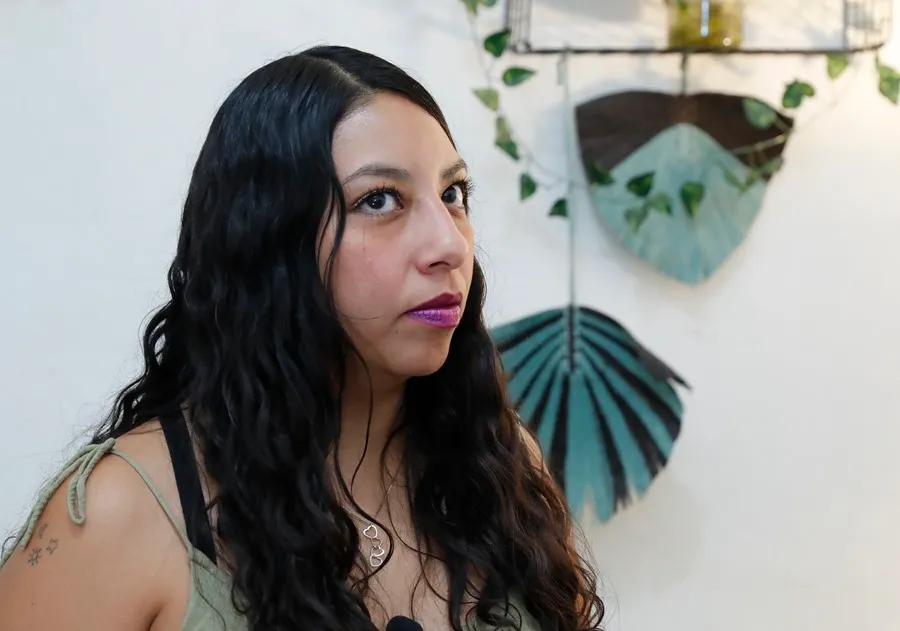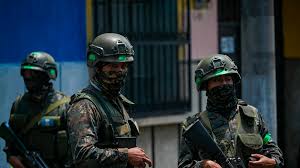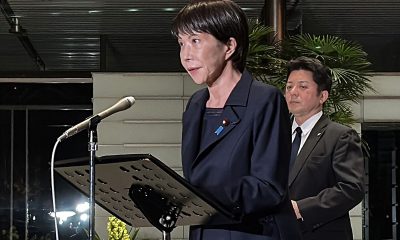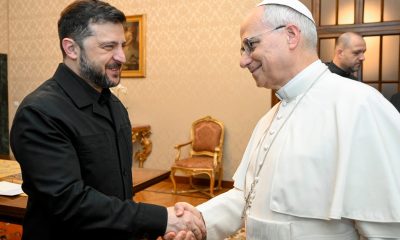International
Safe abortion and without stigma, one of the biggest claims of Mexican women this March 8

Despite the fact that abortion is already legalized in more than 20 of the 32 states of Mexico, many women and pregnant people continue to face barriers to access a safe, timely and stigma-free procedure, a latent claim in the country on the eve of International Women’s Day this Saturday.
Women who have aborted, networks of companions and civil organizations agree that the legal deadlines and causes are insufficient to guarantee this right, and, on the contrary, complicate safe and timely access for most Mexican women.
A few days after the decriminalization in the state of Michoacán (west) last October, Citlalli had to travel to Mexico City to interrupt an unwanted pregnancy, after going through a series of obstacles that prevented her from doing so in her locality.
She was 22 weeks old when she was able to access a safe abortion, although from the beginning she was convinced of her decision, hindered by misinformation and stigma, after the first attempt the medicine failed and she could not go to a clinic for an outpatient procedure.
“And time kept passing,” the woman who preferred to change her name because of the criminalization that persists in the country shared with EFE.
Michoacán is one of the 22 states that have decriminalized voluntary abortion, although limited to 12 weeks, except for Sinaloa (13 weeks) and Aguascalientes, which reduced it to six.
Citlalli was able to travel to Mexico City to abort, thanks to local networks and groups directing her to the Maria Fund, of the NGO Balance, where they provided her with accompaniment and financial support, without which, she says, she would “have had no choice but to have the baby and would not have been able to access a safe abortion.”
Like her, thousands of Mexican women abort in the capital, but many more remain in their states at risk of having unsafe procedures or continuing with pregnancy, despite the Supreme Court’s ruling in 2021 that prevents the criminalization of abortion throughout the country.
Mexico City opened the way in 2007 to free abortion until the first trimester, reforming its laws and opening clinics of Legal Interruption of Pregnancy (ILE), which this 2025 turn 18 years of operating.
Despite being legal, the stigma and lack of medical training have also left their mark on the capital, such as Gaby, who five years ago had an abortion in a public clinic, but faced violence from medical personnel.
Doctors and nurses tried to condition the treatment by refusing to have an intrauterine contraceptive device placed on him, Gaby said, and then they mocked and ridiculed his decision.
“I felt that I was fighting, for my rights (…) and I think that many women feel exactly the same,” said the young woman who tried to report in the clinic, but only found a complaint box and there was never a follow-up, something she continues to claim in every feminist protest.
“I have gone out to march to shout with my sisters for our rights, for this whole patriarchal system that oppresses us so much, that violents us all the time,” he said.
Eliminating abortion from the Criminal Code is one of the main demands of the feminist movement in Mexico, which resonate strongly since last November, when the Congress of the capital was about to eliminate the deadlines for free access.
“The 12 weeks (of gestation) are not enough,” warned Gabriela Millán, of the María Fund, since different barriers intervene access and affect “disproportionately people who are in vulnerable situations.”
The proposal continues in the legislative field, “at the historical maximum it had reached,” said Francisco Cué Martínez, of the Information Group in Selected Reproduction (GIRE).
“It is a real paradigm shift that allows (…) to abandon once and for all that the penal system to determine who, when and how can access a basic health service,” said the lawyer.
International
Colombia says it would not reject Maduro asylum request as regional tensions escalate

The Colombian government stated on Thursday that it would have no reason to reject a potential asylum request from Venezuelan President Nicolás Maduro should he leave office, as regional tensions persist over the deployment of U.S. military forces in the Caribbean since August.
“In the current climate of tension, negotiations are necessary, and if the United States demands a transition or political change, that is something to be assessed. If such a transition results in him (Maduro) needing to live elsewhere or seek protection, Colombia would have no reason to deny it,” said Colombian Foreign Minister Rosa Villavicencio in an interview with Caracol Radio.
However, Villavicencio noted that it is unlikely Maduro would choose Colombia as a refuge. “I believe he would opt for someplace more distant and calmer,” she added.
Colombian President Gustavo Petro also commented on Venezuela’s situation on Wednesday, arguing that the country needs a “democratic revolution” rather than “inefficient repression.” His remarks followed the recent detention and passport cancellation of Cardinal Baltazar Porras at the Caracas airport.
“The Maduro government must understand that responding to external aggression requires more than military preparations; it requires a democratic revolution. A country is defended with more democracy, not more inefficient repression,” Petro wrote on X (formerly Twitter), in a rare public criticism of the Venezuelan leader.
Petro also called for a general amnesty for political opponents and reiterated his call for forming a broad transitional government to address Venezuela’s prolonged crisis.
Since September, U.S. military forces have destroyed more than 20 vessels allegedly carrying drugs in Caribbean and Pacific waters near Venezuela and Colombia, resulting in over 80 deaths.
U.S. President Donald Trump has repeatedly warned that attacks “inside Venezuela” will begin “soon,” while Maduro has urged Venezuelans to prepare for what he describes as an impending external aggression.
International
Cuba battles out-of-control dengue and chikungunya epidemic as death toll rises to 44

Cuba is facing a severe dengue and chikungunya epidemic that has already claimed at least 44 lives, including 29 minors, according to the Ministry of Public Health (Minsap). The outbreak—now considered out of control—has expanded across the entire country amid a critical shortage of resources to confront the emergency.
Authorities report more than 42,000 chikungunya infections and at least 26,000 dengue cases, though they acknowledge significant underreporting as many patients avoid seeking care in health centers where medicines, supplies, and medical personnel are scarce. The first cluster was detected in July in the city of Matanzas, but the government did not officially use the term “epidemic” until November 12.
Chikungunya—virtually unknown on the island until this year—causes high fever, rashes, fatigue, and severe joint pain that can last for months, leaving thousands temporarily incapacitated. Dengue, endemic to the region, triggers fever, muscle pain, vomiting, and, in severe cases, internal bleeding. Cuba currently has no vaccines available for either virus.
Minsap reports that of the 44 deaths recorded so far, 28 were caused by chikungunya and 16 by dengue.
The health crisis unfolds amid deep economic deterioration, marked by the absence of fumigation campaigns, uncollected garbage, and shortages of medical supplies—conditions that have fueled the spread of the Aedes aegypti mosquito, the primary vector for both diseases. “The healthcare system is overwhelmed,” non-official medical sources acknowledge.
Beyond the health impact, the epidemic is heavily disrupting economic and family life. The intense joint pain caused by chikungunya has led to widespread work absences, while hospital overcrowding has forced relatives to leave their jobs to care for the sick. In November, authorities launched a clinical trial using the Cuban drug Jusvinza to reduce joint pain, though results have not yet been released.
International
Ecuador on track for record violence as homicides hit highest level in Latin America again

Violence in Ecuador is expected to reach historic levels by the end of 2025, with the country set to record the highest homicide rate in Latin America for the third consecutive year, according to a report released Thursday by the Armed Conflict Location & Event Data Project (ACLED). The organization warns that criminal activity is not only persisting but could worsen in 2026.
Official figures show 7,553 homicides recorded through October, surpassing the 7,063 registered throughout all of 2024. ACLED estimates that 71% of the population was exposed to violent incidents this year, despite President Daniel Noboa’s declaration of an “internal armed conflict” in an attempt to confront powerful criminal groups.
According to the report, several factors are driving the deterioration of security: a territorial war between Los Chonerosand Los Lobos, the two most influential criminal organizations in the country; the fragmentation of other groups after the fall of their leaders; and Ecuador’s expanding role as a strategic hub for regional drug trafficking.
Since 2021, violence has forced the internal displacement of around 132,000 people, while more than 400,000 Ecuadorians — equivalent to 2% of the population — have left the country. Between January and November alone, violent deaths rose 42%, fueled by prison massacres and clashes between rival gangs.
The report warns that conditions may deteriorate further. Ecuador has been added to ACLED’s 2026 Conflict Watchlist, which highlights regions at risk of escalating violence. The expansion of Colombian armed groups such as FARC dissidents and the ELN, state weakness, and a potential rerouting of drug trafficking corridors from the Caribbean to the Pacific intensify the threat.
“The president is facing a wave of violence that shows no signs of easing,” the report concludes.
-

 International3 days ago
International3 days agoMexico City prepares for 13 million pilgrims at Basilica of Guadalupe
-

 Central America4 days ago
Central America4 days agoGuatemalan soldier wounded in clash with suspected mexican armed group near border
-

 Central America3 days ago
Central America3 days agoMexico and Guatemala launch joint security operation after Agua Zarca border attack
-

 Central America4 days ago
Central America4 days agoGuatemala reverses asset seizures after judge replacement, benefiting ex-president and former ministers
-

 International2 days ago
International2 days agoWashington declares State of Emergency as atmospheric river brings severe flooding
-

 Central America3 days ago
Central America3 days agoU.S. accuses Ortega regime of systematic human rights abuses in Nicaragua
-

 International2 days ago
International2 days agoU.S. to require five-year social media history from tourists under Visa Waiver Program
-

 Central America3 days ago
Central America3 days agoHonduras’ electoral chief reports ongoing technical issues but says results remain intact
-

 International4 days ago
International4 days agoJapan lifts tsunami alert after strong 7.6-magnitude earthquake hits northern coast
-

 Central America3 days ago
Central America3 days agoU.S. finds no evidence of fraud in Honduras election despite delays
-

 Central America3 days ago
Central America3 days agoHonduran University: Nullifying elections without proof of fraud undermines popular sovereignty
-

 International4 days ago
International4 days agoInterior Dept. redefines 2026 Patriotic Days, sparking criticism over removed civil rights holidays
-

 Central America3 days ago
Central America3 days agoCNA director says Libre’s defeat stems from “lack of substance,” not messaging
-

 Central America2 days ago
Central America2 days agoOAS and EU urge honduran political actors to respect vote results and avoid unrest
-

 International18 hours ago
International18 hours agoCuba battles out-of-control dengue and chikungunya epidemic as death toll rises to 44
-

 International3 days ago
International3 days agoZelensky meets Pope Leo XIV as review of U.S. peace plan continues
-

 International18 hours ago
International18 hours agoColombia says it would not reject Maduro asylum request as regional tensions escalate
-

 Central America18 hours ago
Central America18 hours agoHonduras election crisis deepens as CNE president denounces intimidation attempts
-

 International2 days ago
International2 days agoSix ecuadorian soldiers jailed pending trial for alleged extrajudicial execution
-

 International18 hours ago
International18 hours agoEcuador on track for record violence as homicides hit highest level in Latin America again


























